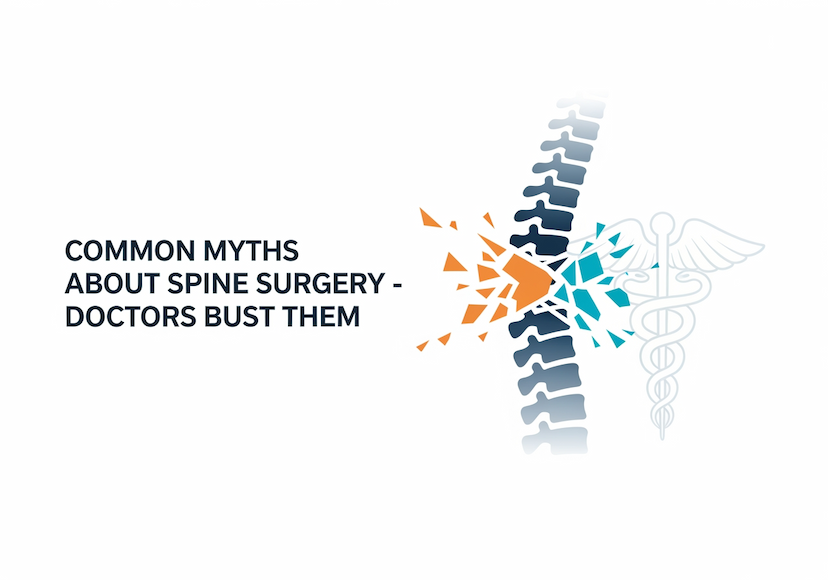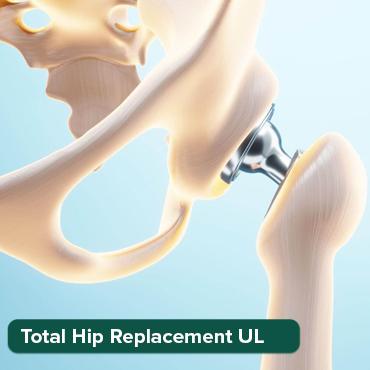
Common Myths About Joint Replacement Doctors Bust Them
14 Nov, 2025
 Healthtrip
Healthtrip- < li>Myth: Joint Replacement is Only for the Elderly
- Myth: Recovery from Joint Replacement is Excruciatingly Painful
- Myth: Joint Replacement Will Restrict My Activities Forever
- Myth: I Need to Wait Until the Pain is Unbearable Before Considering Joint Replacement < li>Myth: All Joint Replacements Last a Lifetime
- Myth: Physical Therapy After Joint Replacement Isn't That Important < li>Myth: Joint Replacement is a Risky Surgery
- Conclusion: Empowering You with Facts About Joint Replacement
Myth 1: Joint Replacement is Only for the Elderly
It's a common assumption that joint replacement is exclusively for older adults hobbled by age-related arthritis. While it’s true that osteoarthritis, a wear-and-tear condition, is more prevalent in older populations, leading to many joint replacement surgeries in that demographic, the reality is far more nuanced. Younger individuals can also be candidates for this procedure. Conditions like rheumatoid arthritis, post-traumatic arthritis (resulting from injuries), and even congenital deformities can necessitate joint replacement at a younger age. We've seen patients in their 40s and 50s regain active lifestyles thanks to joint replacement, allowing them to continue working, pursuing hobbies, and enjoying family time without debilitating pain. Therefore, age isn't the sole determining factor; it's the severity of the joint damage and its impact on your quality of life that truly matter. If you're experiencing persistent joint pain, regardless of your age, consulting with an orthopedic specialist at hospitals like Max Healthcare Saket, for example, is the first step to exploring your options. Healthtrip can help connect you with experienced surgeons who can assess your individual needs and determine if joint replacement is the right solution for you. If you are at an older age Saudi German Hospital Dammam can provide the treatment you need.
Most popular procedures in India
Myth 2: Joint Replacement is Incredibly Painful
The thought of undergoing joint replacement surgery can understandably trigger anxiety, with pain being a primary concern. While it's true that any surgical procedure involves some level of discomfort, the perception of excruciating, unbearable pain is often exaggerated. Modern pain management techniques have revolutionized the post-operative experience. At facilities like Memorial Sisli Hospital, patients benefit from multimodal pain control strategies, which combine various medications and therapies to minimize pain and promote faster recovery. These strategies can include regional anesthesia, nerve blocks, and carefully managed opioid regimens, all tailored to the individual's needs. Furthermore, minimally invasive surgical approaches, offered at places like Hisar Intercontinental Hospital, can also reduce post-operative pain by minimizing tissue damage. It’s important to acknowledge that everyone's pain tolerance varies, but the vast majority of patients report that the pain is manageable and significantly less than the chronic pain they endured before surgery. Healthtrip simplifies the process of finding hospitals with advanced pain management protocols, ensuring your comfort and well-being are prioritized throughout your journey.
Myth 3: Joint Replacement Will Limit My Activity
One of the biggest misconceptions surrounding joint replacement is the belief that it will confine you to a sedentary lifestyle. Many fear they'll have to give up their favorite activities and resign themselves to a life of limited mobility. However, the reality is quite the opposite! Joint replacement is designed to alleviate pain and restore function, ultimately enabling you to return to many of the activities you once enjoyed. While high-impact activities like running and certain contact sports may be discouraged to protect the new joint, many patients successfully resume walking, swimming, cycling, golf, and even dancing. The key is to follow your surgeon's post-operative instructions diligently, engage in prescribed physical therapy to strengthen the surrounding muscles, and gradually increase your activity level. Experienced physical therapists at places like Fortis Memorial Research Institute, Gurgaon, can guide you through a personalized rehabilitation program to optimize your recovery and help you achieve your goals. Healthtrip understands the importance of regaining an active lifestyle, and we connect you with hospitals and rehabilitation centers that prioritize patient empowerment and functional recovery, helping you get back to doing what you love.
Wellness Treatments
Give yourself the time to relax
Lowest Prices Guaranteed!

Lowest Prices Guaranteed!
Myth 4: Joint Replacements Last Forever
While modern joint replacements are incredibly durable and designed to withstand years of use, it's unrealistic to expect them to last a lifetime without any potential issues. The longevity of a joint replacement depends on various factors, including the patient's age, activity level, weight, and overall health, as well as the type of implant used and the surgical technique employed. On average, a well-maintained hip or knee replacement can last for 15 to 20 years, or even longer in some cases. However, just like any mechanical device, joint replacements are subject to wear and tear over time. Factors such as loosening, infection, or instability can eventually lead to the need for revision surgery. It’s crucial to maintain a healthy weight, avoid high-impact activities that could accelerate wear, and follow your surgeon's recommendations for regular check-ups. Early detection of any potential problems can often prevent the need for extensive revision surgery. Hospitals like Singapore General Hospital have specialist who provide detail information on the factors you need to put in mind to make your joint replacement surgery to last longer. Healthtrip emphasizes the importance of realistic expectations and proactive care, connecting you with surgeons who prioritize long-term joint health and provide comprehensive follow-up care.
Myth 5: All Joint Replacement Surgeries Are the Same
It’s easy to assume that a joint replacement is a standardized procedure with a one-size-fits-all approach. However, the reality is that joint replacement surgery is highly individualized, with various techniques and implant options available to suit each patient's unique needs and anatomy. Factors such as the extent of joint damage, the patient's age and activity level, and the surgeon's expertise all influence the surgical approach and implant selection. For example, minimally invasive techniques, offered at places like Helios Klinikum Erfurt, involve smaller incisions and less tissue damage, leading to faster recovery. In other cases, custom-made implants may be necessary to precisely match the patient's bone structure. Moreover, advancements in technology, such as robotic-assisted surgery offered at Cleveland Clinic London, are enabling greater precision and accuracy in joint replacement procedures. Choosing the right surgical approach and implant is crucial for achieving optimal outcomes and long-term joint health. Healthtrip helps you navigate the complexities of joint replacement by connecting you with experienced surgeons who can assess your individual needs and recommend the most appropriate treatment plan.
Myth 6: Physical Therapy After Joint Replacement is Optional
Many patients underestimate the importance of physical therapy following joint replacement surgery, viewing it as an optional add-on rather than an integral part of the recovery process. This couldn't be further from the truth! Physical therapy is absolutely essential for regaining strength, flexibility, and function after joint replacement. The surgery itself is only one piece of the puzzle; the real work begins with rehabilitation. A structured physical therapy program, such as those offered at Yanhee International Hospital, helps to strengthen the muscles surrounding the new joint, improve range of motion, reduce swelling, and restore balance and coordination. Without proper physical therapy, you risk developing stiffness, weakness, and chronic pain, which can significantly compromise the success of your surgery. Experienced physical therapists can guide you through a progressive exercise program tailored to your individual needs and goals. They can also teach you proper body mechanics to protect your new joint and prevent future injuries. Healthtrip recognizes the critical role of rehabilitation in joint replacement recovery and connects you with hospitals and clinics that offer comprehensive physical therapy services. It's an investment in your long-term health and well-being, ensuring you get the most out of your new joint.
Myth: Joint Replacement is Only for the Elderly
It’s a common misconception that joint replacement is solely for individuals in their golden years, conjuring images of retirees seeking relief from age-related arthritis. While it’s true that osteoarthritis, a condition often associated with aging, is a primary driver for joint replacement surgery, the reality is far more nuanced. Joint problems can affect anyone, regardless of age. Accidents, sports injuries, and even genetic predispositions can lead to joint damage requiring intervention. Conditions like rheumatoid arthritis, a chronic autoimmune disorder that causes inflammation of the joints, or avascular necrosis, where bone tissue dies due to lack of blood supply, can impact younger individuals and necessitate joint replacement. At Healthtrip, we understand that joint pain doesn't discriminate, and we connect patients of all ages with world-class orthopedic specialists at hospitals like Fortis Memorial Research Institute, Gurgaon and Vejthani Hospital who can assess their individual needs and determine the most appropriate course of treatment. Don't let age be a barrier to seeking the relief you deserve. If you're experiencing persistent joint pain, it's crucial to consult with a qualified medical professional to explore all available options.
Furthermore, the advancements in medical technology and implant materials have made joint replacement a viable option for younger, more active individuals. Modern implants are designed to withstand greater stress and provide a longer lifespan, allowing recipients to return to a fulfilling and active lifestyle. Consider, for instance, someone in their 40s or 50s who has suffered a severe sports injury leading to significant cartilage damage. Delaying joint replacement could lead to further deterioration, chronic pain, and limited mobility, impacting their career, family life, and overall well-being. In such cases, joint replacement can be a transformative solution, restoring function and allowing them to pursue their passions without the constraints of debilitating pain. Hospitals like Memorial Sisli Hospital offer advanced joint replacement techniques, ensuring patients receive the best possible care and outcomes. Choosing Healthtrip means gaining access to a global network of hospitals and specialists dedicated to providing comprehensive orthopedic care, regardless of your age. We empower you to make informed decisions about your health and connect you with the right resources to achieve a pain-free and active life.
Myth: Recovery from Joint Replacement is Excruciatingly Painful
The fear of immense pain is a significant deterrent for many considering joint replacement surgery. It’s easy to imagine a recovery process filled with agonizing discomfort and prolonged suffering. However, modern advancements in pain management techniques have dramatically changed the post-operative experience. While some discomfort is inevitable after any surgical procedure, including joint replacement, it is now effectively managed through a combination of medications, nerve blocks, and physical therapy. Hospitals like Saudi German Hospital Cairo, Egypt prioritize pain management strategies to ensure a more comfortable recovery for their patients. Anesthesia protocols have evolved to minimize post-operative nausea and grogginess, allowing patients to begin their rehabilitation sooner. Furthermore, minimally invasive surgical techniques, increasingly employed in joint replacement procedures, contribute to less tissue damage, reduced bleeding, and consequently, less post-operative pain.
Beyond medication, physical therapy plays a crucial role in managing pain and restoring function. A skilled physical therapist guides patients through a tailored exercise program designed to strengthen the surrounding muscles, improve range of motion, and gradually increase weight-bearing capacity. This personalized approach empowers patients to actively participate in their recovery and achieve optimal outcomes. Furthermore, techniques like cryotherapy (cold therapy) and transcutaneous electrical nerve stimulation (TENS) can provide additional pain relief and promote healing. At Healthtrip, we partner with hospitals that emphasize a holistic approach to pain management, integrating medical interventions with rehabilitative therapies to ensure a smoother and more comfortable recovery journey. We can connect you with facilities like Vejthani Hospital that offer comprehensive rehabilitation programs, including hydrotherapy and occupational therapy, to support your recovery every step of the way. Remember, pain management is a priority, and advancements in medical care are designed to minimize discomfort and help you regain your mobility and independence.
Myth: Joint Replacement Will Restrict My Activities Forever
Another prevalent concern surrounding joint replacement is the belief that it signals the end of an active lifestyle, confining individuals to a sedentary existence with limited mobility. This couldn't be further from the truth. While it's essential to follow your surgeon's recommendations and avoid high-impact activities that could potentially damage the implant, joint replacement is actually designed to restore function and enable you to return to many of the activities you enjoy. In fact, many patients find that joint replacement allows them to participate in activities they had previously given up due to pain and limited mobility. Think about being able to walk without pain, play with your grandchildren, or even resume hobbies like gardening or swimming. Hospitals like Fortis Hospital, Noida, emphasize patient education and provide detailed guidelines on safe activities following joint replacement. The key is to choose activities that are low-impact and do not place excessive stress on the joint.
Furthermore, modern joint implants are designed to be more durable and withstand a wider range of activities than their predecessors. With proper care and maintenance, a joint replacement can last for many years, allowing you to enjoy an active and fulfilling lifestyle. Your orthopedic surgeon and physical therapist will work with you to develop a personalized exercise program that gradually increases your strength, flexibility, and endurance. They can also advise you on appropriate modifications to your activities to minimize stress on the joint. For instance, switching from running to cycling or swimming can provide a great cardiovascular workout without putting undue pressure on the replaced joint. Healthtrip connects you with hospitals such as Memorial Bahçelievler Hospital that boast experienced orthopedic teams who can guide you through the recovery process and help you safely return to an active lifestyle. Ultimately, joint replacement is about regaining your freedom and independence, not restricting them. It's about reclaiming your life and pursuing the activities that bring you joy.
Also Read:
Myth: I Need to Wait Until the Pain is Unbearable Before Considering Joint Replacement
The notion that you must endure excruciating pain before considering joint replacement is a common misconception, and frankly, it's a bit like waiting for your car engine to completely seize before thinking about an oil change! In reality, this approach can be detrimental to your overall health and well-being. Prolonged, intense pain not only diminishes your quality of life but can also lead to muscle weakness, decreased mobility, and even depression. It’s far better to consult with an orthopedic specialist at facilities like Fortis Memorial Research Institute or Max Healthcare Saket when you start experiencing persistent joint pain that interferes with your daily activities. Early intervention allows for a comprehensive evaluation, including imaging and physical exams, to determine the underlying cause of your pain and explore all available treatment options, from conservative measures like physical therapy and medication to joint replacement if necessary. The goal is to manage your pain effectively and prevent further joint damage, not to tough it out until you're completely debilitated. Ignoring early warning signs and delaying treatment can make the eventual recovery process more challenging and potentially impact the long-term success of the joint replacement. So, listen to your body, seek professional advice, and prioritize early intervention for a better outcome and a more comfortable life.
Also Read:
Myth: All Joint Replacements Last a Lifetime
Let's be honest, the idea that joint replacements last forever is a tempting thought, like finding a never-ending supply of your favorite dessert! However, it’s essential to understand that while modern joint implants are incredibly durable and designed to provide many years of pain relief and improved mobility, they aren’t indestructible. The longevity of a joint replacement depends on several factors, including your age, activity level, weight, overall health, and the type of implant used. Younger, more active individuals may place greater stress on their new joints, potentially leading to earlier wear and tear. Similarly, being overweight can accelerate the deterioration process. While some joint replacements can last 20 years or more, others may require revision surgery sooner. Regular follow-up appointments with your orthopedic surgeon at hospitals like the Saudi German Hospital Cairo, Egypt, are crucial for monitoring the condition of your implant and detecting any potential problems early on. Maintaining a healthy weight, engaging in low-impact exercises, and following your surgeon's recommendations can significantly contribute to the lifespan of your new joint. The key is to have realistic expectations and proactively manage your joint health to maximize the benefits of your joint replacement.
Myth: Physical Therapy After Joint Replacement Isn't That Important
Dismissing physical therapy after joint replacement is like buying a brand-new sports car and then never learning how to drive it! Physical therapy is an absolutely crucial component of the recovery process and plays a vital role in ensuring the long-term success of your joint replacement. After surgery at facilities like Vejthani Hospital or Bangkok Hospital, your muscles and tissues around the joint will be weak and stiff. Physical therapy helps to restore strength, flexibility, and range of motion, allowing you to regain optimal function and mobility. A qualified physical therapist will develop a personalized rehabilitation program tailored to your specific needs and goals. This program will typically include a combination of exercises designed to strengthen the muscles surrounding the joint, improve balance and coordination, and reduce pain and swelling. Moreover, physical therapy teaches you how to properly use your new joint and avoid movements that could potentially damage it. Skipping physical therapy can lead to a slower recovery, increased pain and stiffness, and a higher risk of complications. So, embrace physical therapy as an essential investment in your long-term joint health and overall well-being. It’s your roadmap to getting back to the activities you love and enjoying a fulfilling, active life.
Also Read:
Myth: Joint Replacement is a Risky Surgery
The perception that joint replacement is inherently a high-risk surgery is often fueled by outdated information and anxieties about going under the knife. While any surgical procedure carries some degree of risk, advancements in surgical techniques, implant technology, and anesthesia have significantly reduced the risks associated with joint replacement. Modern joint replacement surgery, performed at reputable hospitals like Memorial Sisli Hospital or Fortis Escorts Heart Institute, is generally considered safe and effective. Complications such as infection, blood clots, and implant dislocation are relatively rare and are typically managed effectively with prompt medical attention. Your orthopedic surgeon will thoroughly evaluate your overall health and medical history to assess your individual risk factors and take appropriate precautions to minimize potential complications. Furthermore, following your surgeon's pre- and post-operative instructions carefully can significantly reduce your risk. Open communication with your surgical team is essential. Don't hesitate to ask questions and express any concerns you may have. Remember, joint replacement surgery has helped millions of people worldwide regain pain-free mobility and improve their quality of life. With careful planning, experienced surgeons, and a commitment to following medical advice, the benefits of joint replacement often far outweigh the risks.
Conclusion: Empowering You with Facts About Joint Replacement
Navigating the world of joint replacement can feel like traversing a maze filled with myths and misconceptions. The goal here at Healthtrip, working with facilities like OCM Orthopädische Chirurgie München and Quironsalud Hospital Murcia, is to empower you with accurate information and dispel these myths, enabling you to make informed decisions about your joint health. Remember, joint replacement isn't just for the elderly; it's a viable option for anyone suffering from debilitating joint pain that significantly impacts their quality of life. Recovery, while requiring dedication and effort, is manageable with proper pain management and physical therapy. While joint replacements may not last forever, they can provide many years of pain relief and improved mobility. Don't wait until your pain becomes unbearable before seeking medical advice. Early intervention and a proactive approach to your joint health can lead to better outcomes. Stay informed, consult with experienced orthopedic specialists, and embrace the possibilities that joint replacement can offer. With the right information and guidance, you can confidently navigate your journey to a healthier, more active, and pain-free life. We at Healthtrip are here to help you connect to the best possible care and support you every step of the way.
Related Blogs

How to Choose the Right Hospital for Neuro Surgery Using Healthtrip's Criteria
Explore evaluations, innovations, hospital comparisons, and global success insights for

Latest Global Innovations in Neuro Surgery Now Available in India
Explore evaluations, innovations, hospital comparisons, and global success insights for

How Healthtrip Ensures Evidence-Based Care in Neuro Surgery
Explore evaluations, innovations, hospital comparisons, and global success insights for

Success Rates of Neuro Surgery in India Compared to Other Countries
Explore evaluations, innovations, hospital comparisons, and global success insights for

Complete Medical Evaluation Process Before Neuro Surgery
Explore evaluations, innovations, hospital comparisons, and global success insights for

Common Myths About Spine Surgery Doctors Bust Them
Explore evaluations, innovations, hospital comparisons, and global success insights for










